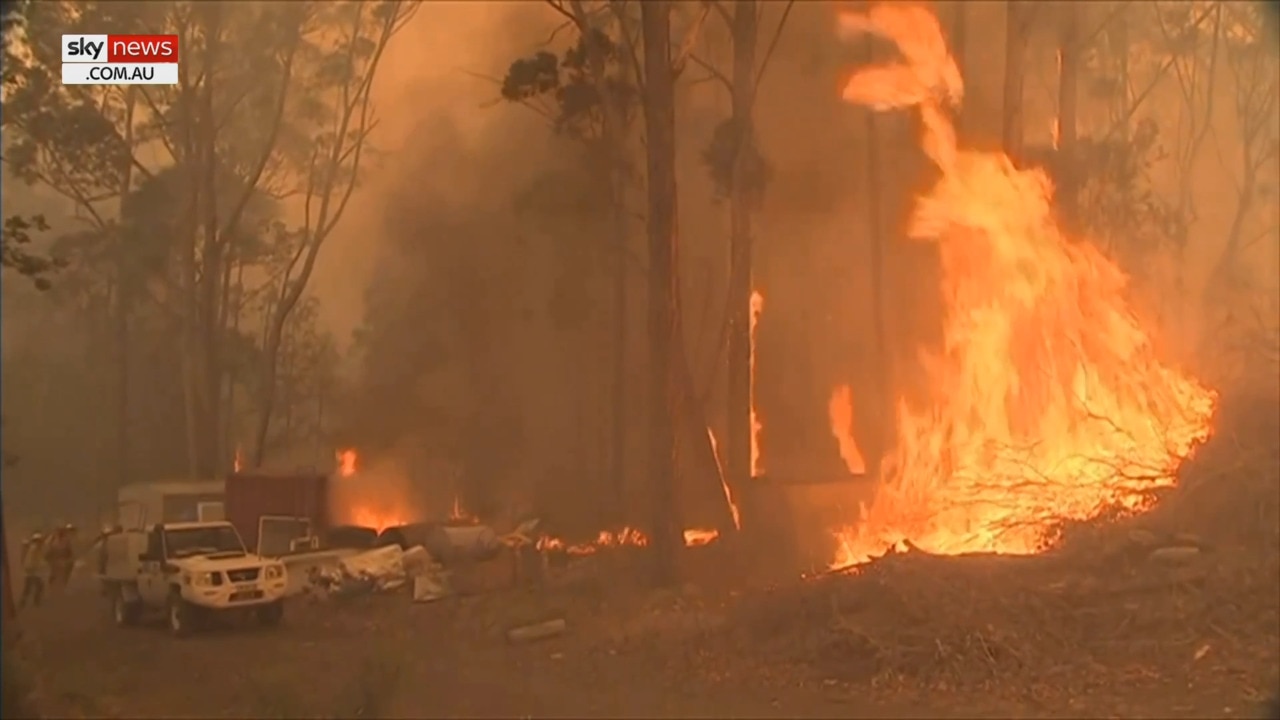Crafting Your Property's Safety: A Step-by-Step Bushfire Management Plan Guide
Crafting Your Property's Safety: A Step-by-Step Bushfire Management Plan Guide
Blog Article
Crucial Tips for Bushfire Management to Make Sure Fire Defense

Comprehending Bushfire Risk Degrees
Understanding the varying levels of bushfire risk is necessary for effective preparation and prep work in mitigating possible risks to lives and buildings. Bushfire risk degrees are usually categorized based on aspects such as weather, gas accessibility, topography, and historic fire habits. By comprehending these threat neighborhoods, levels and individuals can proactively carry out strategies to minimize vulnerability and boost durability when faced with potential bushfire occasions.
The initial degree of bushfire threat is reduced threat, where the chance of a bushfire happening and triggering considerable harm is marginal. Risky degrees symbolize a considerable hazard, with problems conducive to fast fire spread and extreme fire behavior.
Understanding these bushfire threat levels makes it possible for stakeholders to tailor their readiness and feedback actions appropriately, making certain a efficient and positive technique to bushfire management.
Developing a Defensible Area
Reliable bushfire monitoring starts with establishing a defensible area around homes to improve protection against prospective fire risks. A defensible room is a barrier zone that develops an obstacle in between a structure and the bordering combustible plant life. This room functions as a vital line of protection, providing firefighters a risk-free location to operate and helping to minimize the danger of a fire infecting the building.
When developing a defensible room, it is important to think about the format of the home and the surrounding landscape. Cleaning vegetation, specifically very combustible plants, within a specific radius of the property can help avoid the rapid spread of fires. Furthermore, keeping a well-irrigated area around the home can additionally enhance its defensibility.
Routine maintenance of the defensible room is important to guarantee its effectiveness. This consists of trimming overhanging branches, clearing dead vegetation, and maintaining the area without debris. By spending time and initiative right into developing and preserving a defensible space, building owners can considerably improve their chances of shielding their homes and assets during a bushfire.
Implementing Fireproof Landscape Design
When making landscapes to minimize the threat of bushfires, including fireproof elements is crucial for improving home protection and minimizing fire hazards. Select plants with high dampness content, low oil web content, and very little dead plant his comment is here life to decrease the threat of fire spread.

Creating an Emergency Situation Evacuation Strategy
Developing an extensive emergency emptying strategy is critical for making certain the safety and security and well-being of people during potential bushfire cases (BAL Report). A reliable emptying strategy ought to detail clear treatments to follow in case of a bushfire threat, consisting of designated emptying courses, setting up points, and communication methods
To begin developing an emergency emptying plan, it is important to evaluate the particular threats and vulnerabilities of your location. Identify numerous discharge routes that bring about risk-free locations far from the fire, taking into consideration factors such as surface, road ease of access, and prospective risks. Develop communication networks to alert residents of an approaching emptying, utilizing additional info techniques such as sirens, text informs, or door-to-door alerts.
Consistently testimonial and exercise the evacuation plan with all locals or community members to ensure everybody recognizes their functions and obligations. Conduct drills to examine the efficiency of the plan and make any type of essential changes. By having a well-prepared discharge plan in position, you can improve the possibilities of a secure and organized emptying during a bushfire emergency situation.
Preserving Fire Security Devices
After establishing a detailed emergency evacuation plan for bushfire incidents, it is vital to focus on the regular maintenance of fire safety and security equipment to make sure optimal performance and readiness. Routine upkeep of fire security equipment such as fire extinguishers, smoke alarm, smoke alarm, and sprinkler systems is critical in guarding lives and home throughout a bushfire. Carrying out regular inspections, testing, and servicing of these tools by certified experts is crucial to assure they are in working order when required.
Fire extinguishers ought to be checked frequently for pressure degrees, noticeable damages, and appropriate functionality. Smoke alarm need to have their batteries replaced a minimum of annually and undergo month-to-month screening to guarantee they are functional. Fire alarm systems and automatic sprinkler need to be checked periodically to validate they are connected and operating correctly. Furthermore, it is important to maintain fire safety and security devices accessible, unobstructed, and plainly identified for very easy identification during an emergency situation. By diligently maintaining fire security tools, individuals can improve their preparedness and action capacities in case of a bushfire.
Conclusion
Finally, reliable bushfire monitoring entails recognizing threat degrees, producing defensible areas, carrying out fireproof landscape design, establishing emptying plans, and maintaining fire safety and security equipment. By following these essential pointers, people can guarantee far better fire security and safety for their properties and areas. It is very important to focus on positive actions to minimize the dangers related to bushfires and to be gotten ready for emergencies.
By recognizing the nuances of bushfire threat levels, developing defensible spaces, executing fire-resistant landscaping, creating detailed evacuation plans, and making sure the maintenance of fire safety and security devices, individuals and communities can significantly strengthen their durability against the devastations of wildfires - Bushfire Risk. These tips are not only important for protecting against prompt fire threats but additionally for cultivating long-lasting fire protection methods that can make a substantial difference in the face of intensifying bushfire dangers
Risky degrees indicate a significant threat, with conditions helpful to quick fire spread and extreme fire habits. Routine maintenance of fire safety devices such as fire extinguishers, smoke detectors, fire alarms, and lawn sprinkler systems is critical in securing lives and building throughout a bushfire.In conclusion, effective bushfire administration involves comprehending risk levels, developing defensible rooms, carrying out fireproof landscape design, creating evacuation strategies, and keeping fire safety and security tools.
Report this page